
I P S F I P S F PARO PARO NEWSLETTER NEWSLETTER S E P T 2 0 2 2I S S U E 9
It's been a strange year. As we try to move on from the COVID-19 outbreak, there's no denying that we ' re still grappling with its effects. Although many restrictions have been lifted throughout the region, caution is still needed. Yet, despite the lasting effects of COVID, students continue to show resilience. Students continued to host incredible events in person and virtually.
We hope that this will be reflected in this issue of the Pan American Regional Office newsletter. We hope you will read the words written by the students and feel inspired to participate in the work of your organization and the IPSF. After all, they should both serve as conduits for your growth and education.

PARO Newsletter #9 | English version

PARO Newsletter #9 | English version Mycophenolate Exposure and Neutropenia in Pediatric Kidney Transplant Patients.....................13 Is There Such a Thing as a Clinical Community Pharmacist? 14 More than pills and condoms: How a group of pharmacy students took action in improving sex education in schools through gamification......................................................................................16 Providing Hope in the Midst of the Pandemic: Vaccination Efforts of Canadian Pharmacy Students....................................................................................................................................................................18 Member Organization Perspectives V SINAEF (V National Symposium of Pharmacy Students).........................................................................20 Pharmaceutical training agreement between ANEQyF Chile and “ALTAIR Capacitaciones”........22 5th National Congress of Pharmacy and Biochemistry Students 23 APhA ASP Virtual Student Exchange Program...............................................................................................25 Being a Part of Canada’s Lifeline: Pharmacy Students Across Canada Promote Blood Donations During the Pandemic...............................................................................................................................................26 Campaign to combat counterfeit medications..............................................................................................28
MESSAGE FROM THE PARO CHAIRPERSON
Feb. de 2020 | Vol. 8 Dear IPSF PARO members,
It is such a great pleasure and honour to serve as the Chairperson of the Pan American Regional Office for this mandate. This year has been challenging, nevertheless, PARO members demonstrated resilience and perseverance throughout the mandate.
I am proud to show you the ninetieth IPSF PARO Newsletter, which works as a platform to see some awesome activities and experiences we had this year in our region.
This year the relations between each Member Organization from PARO have increased and I hope this motivation of integrity and friendship continues in the next years. Also, I would like to see more participation and collaboration between all of you.
In addition, I want to congrats the great effort of the PARO Regional Working Group and the PARO Subcommittee members for their time and for all the projects they made for us. The whole effort invested into our activities in our region and into every country is a motivation for all of us. Finally, I hope the IPSF PARO Newsletter encourages you all to get involved with your member organization and live the IPSF spirit. Viva la Pharmacie!
PARO Newsletter #9 | English version
Feb. de 2020 | Vol. 8
That's been the whole adventure this year. I have learned so much during my tenure. It has been a privilege to serve the region. I wanted to take this opportunity to thank my team for their excellent work this year. Many of them have consistently modeled excellence throughout this mandate. I hope to continue to see them participate in the IPSF and the IPSF PARO.
Through the course of this mandate there have been some challenges such as the inactive of the IPSF PARO website.I tried to overcome this by regularly publishing PARO projectors and sharing news on our platforms. I hope that this issue will be resolved for the new regional head of media and publications. If not, my message to the next RMPO is be creative. Be flexible. Be consistent. Be resilient. This position will require a lot from you, but it will also help you grow and learn as a leader.
I also wanted to thank the member organizations and contacts. I was constantly impressed by the level of work done. For those who have not been able to be as active, I encourage you to engage with the region, with your regional working group and with the IPSF as a whole. We are here to support you and your students. We want you to succeed, so if we can help you in that regard, we will.Thank you for allowing me to serve as RMPO PARO.
I hope you enjoy reading this edition of the PARO newsletter. I hope you will be motivated and encouraged by its content to lead events and projects. To also share your stories with us and continue to inspire others.
Best wishes, Maria
MESSAGE FROM THE REGIONAL MEDIA AND PUBLICATIONS OFFICER PARO Newsletter #9 | English version



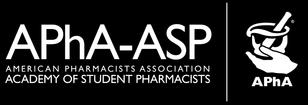




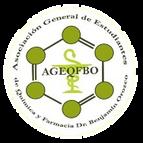




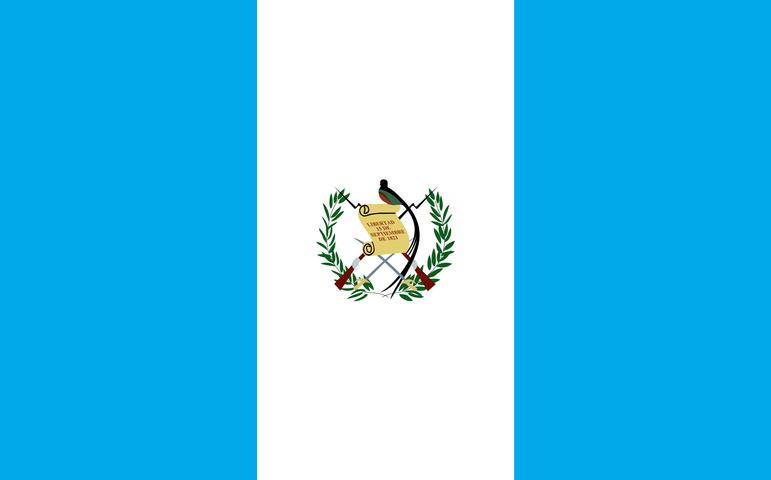


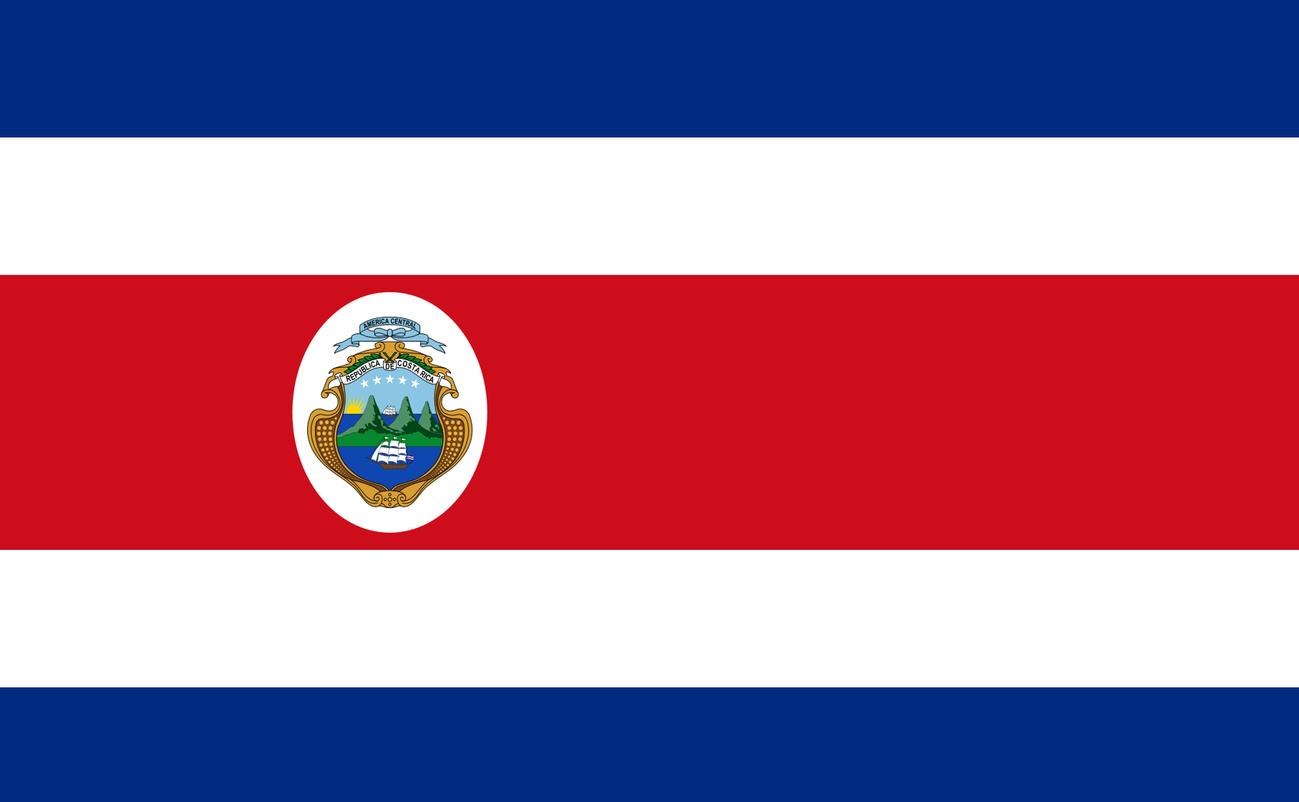

NORTH, CENTRAL AND CARIBBEAN REGION OF PARO CAPSI | Canada IPSA-NSU | USA APhA-ASP | USA OEQF | Guatemala FECOEF| Costa Rica AHEP| Haiti FEFARMEX | Mexico BAPS | Belize AGEQF-BO | El Salvador FULL MEMBER OF PARO MEMBER IN ASSOCIATION OF PARO 6




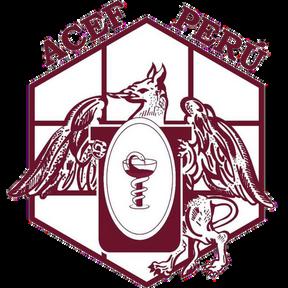
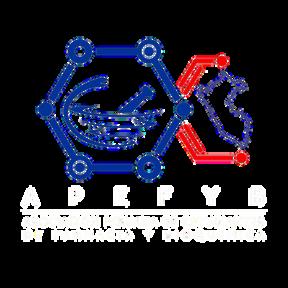







FULL MEMBER OF PARO SOUTH REGION OF PARO APEFYB | Peru SOCEIFARBIO| Bolivia ACEQF | Colombia FEBRAF | Brazil ANEQYF| Chile ACEF | Peru AEFRA | Argentina MEMBER IN ASSOCIATION OF PARO 7 AEFPY, PARAGUAY








IPSF PARO RPO Gabrielle Gimenes Chairperson of PARS 14th Yanara Garrido Chairperson Hugo Napan IPSF PARO RMPO Maria Gonzalez Immediate Past Chairperson Sofiya Terekhovska IPSF PARO RRO Stefanie Espina IPSF PARO Secretary Pablo Hidalgo 8
PARO TEAM 2021-2022 Secretary Portfolio 9 ANDRE KOGA SECRETARY SUBCOMMITTEE EVELYN GAMBOA VEGA QUALITY CONTROL SUBCOORDINATOR MARIA XIMENA TORDOYA SALAZAR KATERIN CORRALES
PARO TEAM 2021-2022 Regional Relations Officer Portfolio 10 LUISA MARIA GARCIA OTALORA REGIONAL RELATIONS SUBCOMMITTEE DANIELA ARRIVILLAGA VALENZUELA INTERNAL AFFAIRS SUBCOMMITTEE ALEJANDRO NIETO BALDEON LIZALBE CRISTIAN TINCO QUISPE EXTERNAL AFFAIRS SUBCOMMITTEE JOSEPPHINE HON
11 Regional Media and Publications Officer Portfolio PARO TEAM 2021-2022 KARLA MARÍA MARTÍNEZ ORDÓÑEZ MEDIA AND PUBLICATIONS SUBCOMMITTEE YANELI TZIAN MEDIA AND PUBLICATIONS SUBCOORDINATOR LIBNI MELISSA PÉREZ RIVAS ANAÍS MARQUES TRANSLATIONS AND COMMUNICATIONS SUBCOMMITTEE ANGIE REBECA FLORES RODRÍGUEZ GLORIA ALEXANDRA LÉSSEL ROMERO LINDSAY QUESADA SALAS YIFAN ZHOU LUCAS PEDRO DOS SANTOS CRHIS JEANINE MARQUINA GUZMÁN KYLE GROOMS MARILENA YATACO CAMARENA TRANSLATIONS AND COMMUNICATIONS SUBCOORDINATOR KIARA TORRES GARCIA
12 12 Regional Projects Officer Portfolio PARO TEAM 2021-2022 BRIGGIETE YUPANQUI PUBLIC HEALTH SUBCOMMITTEE GIOVANNA SOUSA SILVA PHARMACY EDUCATION SUBCOMMITTEE ARON FRANCISCO CORTEZ QUISPE JOANNE SHEN PROFESSIONAL DEVELOPMENT SUBCOMMITTEE MARIA DE GUADALUPE ENRIQUEZ ANCO ARRIETTY SONG HUMANITARIAN SUBCOORDINATOR YU QI ZHOU DIANA CALDERÓN PIEDRA
Abstract
Background
Mycophenolate Mofetil (MMF) is a pro drug used for the prevention of graft rejection in pediatric renal transplant patients1 MMF is converted in the body into mycophenolate acid (MPA), where it exerts its immunosuppressive effect on lymphocytes and other immune cells (1) Adult studies suggest that high MPA exposure is linked to incidences of neutropenia, but it is unclear if this relationship translates to the pediatric population (2,3)
Objective
To determine if there is a correlation between MPA area under the time concentration curve (AUC) and absolute neutrophil count (ANC) in pediatric renal transplant recipients

Methods
This was a retrospective chart review Inclusion criteria included 4 MPA measurements in order to calculate AUC, as well as complete corresponding demographic information and biochemical lab parameters (4) Non parametric correlation analyses were performed due to non normal distribution of data
Results
Overall, 52 patients (48% male) were included in the study and 4 (8%) were identified to have neutropenia The mean age of patients was 1275 ± 471 years with an expected variability in weight, height, body surface area, and biochemical lab parameters Regarding our correlation analysis, both the Spearman’s Rank Order Correlation (p=0813) and Kruskal Wallis test (p=0995) suggested that there was no correlation between MPA AUC and ANC

Conclusion
Although our study yielded no direct correlation between MPA AUC and ANC, it likely suggests that other patient factors need to be considered as possible covariates and confounders Specifically, concomitant use of steroids is an area of future investigation as this class of immunosuppressants has been postulated to induce neutrophilia5
References
1 Rong Y, Jun H, Kiang TKL Population pharmacokinetics of mycophenolic acid in paediatric patients Br J Clin Pharmacol 2021;87(4):1730 57


2 Dalal P, Grafals M, Chhabra D, Gallon L. Mycophenolate mofetil: safety and efficacy in the prophylaxis of acute kidney transplantation rejection Ther Clin Risk Manag 2009;5:139 49

3 Wang K, Zhang H, Li Y, Wei Q, Li H, Yang Y, et al Safety of mycophenolate mofetil versus azathioprine in renal transplantation: A systematic review Transplant Proc 2004 Sep 1;36(7):2068
70 4 Filler G Abbreviated mycophenolic acid AUC from C0, C1, C2, and C4 is preferable in children after renal transplantation on mycophenolate mofetil and tacrolimus therapy Transpl Int Off J Eur Soc Organ Transplant 2004 Mar;17(3):120 5
5 Ronchetti S, Ricci E, Migliorati G, Gentili M, Riccardi C How Glucocorticoids Affect the Neutrophil Life Int J Mol Sci 2018 Dec 17;19(12):4090
John Choi, Tony Kiang, Jenny JWichart ohn Choi, Tony Kiang, Jenny Wichart
IPSF PARO
13
Ivy IHuang vy Huang

What is a “clinical” service in a community pharmacy? Hearing the words clinical and community side by side sounds instinctively contradicting and unnatural It’s true that since the beginning of pharmacy, the pharmacist’s primary role is in the dispensary, where their priorities have been to provide the right drug to the right patient.1 However, with the new emergence of PharmD’s into community practice, they are ready challenge the definition of what being a pharmacist means and refining the boundaries of practice
If you search for the definition of “clinical” online, the Oxford Dictionary of English defines it as the “treatment and prevention of disease” (2) By this definition, certainly all pharmacists are clinical whether they practice in a community or hospital setting Nevertheless, having an official definition of “clinical” establishes pharmacists as an integral part of the health care team rather than auxiliary players Indeed, dispensing remains as a core service for pharmacists however, stepping outside of that box illuminates endless possibilities
In British Columbia, there is no definition for the word “clinical” nor “clinical services” by any regulating body. Through the BC PharmaCare program, pharmacists are eligible to claim a clinical service fee for having performed services such as prescription renewal, thus implying that these services are “clinical”(3)

But how about services that lie outside the claimable fee, are they not considered clinical? It seems that this ambiguity extends to the community pharmacies themselves I completed an environmental scan of websites of all community pharmacies in BC and my finding was that no pharmacy website had defined the meaning of “clinical” or “clinical services” despite offering some sort of “clinical” or cognitive service This finding was interesting for many reasons
Firstly, despite receiving financial compensation from the BC government for performing such “clinical” services, there is very little advertisement of these services by the pharmacy or pharmacist on any internet platform
This goes hand in hand with the low uptake of clinical services by BC pharmacists as shown in the 2021 end of year BC Pharmacare Newsletter To highlight this issue further, a 2015 study on BC pharmacists found that only 017% of eligible prescription adaptation were performed(4) The numbers in 2021 are shockingly similar(5)
Secondly, this shows that despite the current movement of the profession towards more clinical work, there are many frameworks not yet in place for this shift in pharmacy work culture For example, the lack of formal definition of “clinical” on any website or documentation alongside limited scope of practice for pharmacists in BC may be a barrier for pharmacists who want to practice clinically
One of the dangers of not having a definition of the term “clinical” lies in the ambiguity of the clinical community pharmacist role Shifting the perspective of a community pharmacist to be seen as a clinical pharmacist can be empowering in interactions with both patients and other health care providers

In the era of increasing PharmD graduates entering the profession, pharmacists are more capable than over to engage in more aspects of patient care, outside of the dispensary



IPSF PARO
14
One recent example of this can be seen in how pharmacists stepped up during the COVID 19 pandemic to administer vaccines in pharmacies as well as immunization clinics (6) These actions demonstrate the capabilities of pharmacists’ ability to provide clinical roles in a community pharmacy
There is no denying the current movement in community pharmacy that is pushing the profession forward, however, without a standardized definition, the path forward is unclear As the landscape of community pharmacy changes, it becomes increasingly important for terms such as “clinical” and “clinical service” to be defined as they will shape the future of the profession
References
1 Gier J Clinical Pharmacy in Primary Care and Community Pharmacy Pharmacotherapy [Internet] 2000 [cited 14 February 2022];20(10 Part 2):278S 281S. Available from: https://accpjournalsonlinelibrarywileyc om/doi/epdf/101592/phco2016278S350 05?saml referrer
2 Clinical [Internet] Oxford English Dictionary 1889 [cited 14 February 2022] Available from: https://wwwoedcom/view/Entry/34381? redirectedFrom=clinical&
3 85 Special Services Fees Province of British Columbia [Internet] Www2govbcca 2022 [cited 14 February 2022] Available from: https://www2govbcca/gov/content/hea lth/practitioner professional resources/pharmacare/pharmacare publications/pharmacare policy manual 2012/pharmacyfees subsidies providerpayment/special services fees
4 Law M, Cheng L, Kratzer J, Morgan S, Marra C, Lynd L et al Impact of allowing pharmacists to independently renew prescriptions: A population based study Journal of the American Pharmacists Association [Internet] 2015 [cited 14 February 2022];55(4):398 404 Available from: https://pubmedncbinlmnihgov/261153 80/
5 BC PharmaCare Newsletter [Internet] BC Ministry of Health; 2021 [cited 14 February 2022] Available from: https://www2govbcca/assets/gov/healt h/health drug coverage/pharmacare/newsletters/news 21 012pdf
6 Poon A Pharmacists essential to COVID 19 vaccine roll out | BC Pharmacy Association [Internet]. Bcpharmacyca 2021 [cited 14 February 2022] Available from: https://wwwbcpharmacyca/tablet/sprin g 21/pharmacists essential covid 19 vaccine roll out

"There is no denying the current movement in community pharmacy that is pushing the profession forward, however, without a standardized definition, the path forward is unclear. As the landscape of community pharmacy changes, it becomes increasingly important for terms such as “clinical” and “clinical service” to be defined as they will shape the future of the profession."

IPSF PARO
15
Sex is more than just a fun activity According to the Declaration of Sexual Rights, all rights pertaining to human sexuality are human rights, and thus, must be protected 1
A core principle of that is the right to access to accurate and understandable information, which is usually taught in schools However, this subject can be quite challenging for health professionals and educators, especially in a conservative and politically unstable country such as Brasil 2 Having that in mind, a group of pharmacy students from FAS, a non profit organization, decided to take action and create its own sex ed program to complement schools' curriculum in São Paulo, Brazil

In order to tackle such a difficult subject, gamification was the chosen method It implies the Introduction of game elements into non game situations 3, like earning points when learning a language on Duolingo or even competing against your peers on Kahoot As Dana Salab Alsham states in her master thesis, gamification can be an excellent tool when teaching “difficult subjects”, such as racism, death of sexual education 4
The reason for that is that games can encourage social emotional learning, build intrinsic motivation and foster autonomy, critical thinking, and communication skills 4 7 Those abilities are essential for healthy sexual development, as stated by ITGSE 8, the international guidelines to building comprehensive sexual education curricula (CSE)

This approach is shown to bring down STI’s and teenage pregnancy rates, as well as improve gender equality, lower LBGBQIA+ violence in schools and empower students to avoid and report sexual assault9 That’s mainly due to its holistic approach that addresses the cognitive, emotional, physical, and social aspects of sexuality

Luiz Gustavo dos Santos Lima, Erick Tavares Marcelino LAlves, uiz Gustavo dos Santos Lima, Erick Tavares Marcelino Alves, Camila Alves Novais De CJesus amila Alves Novais De Jesus
Figure 1 Teens sitting on a circle during the “true or false” activity
IPSF PARO
16
Keeping in mind CSE philosophy, FAS created a set of activities designed for different age groups Children from 6 to 10 years of age are taught about body parts in the “yes or no touch” game Each round, children are asked if it’s ok to touch a rag doll's body part, which is covered in question marks Intimate parts, like breasts and genitals, are then covered in X marks, meaning that other people shouldn’t touch them
For the adolescents, whose ages varied from 11 to 15 years old, a different approach is used In a simple game, teens are asked about some sex ed topics and asked to answer whether the affirmation is true or false The goal here is to build communication between the educator and the students, and amongst its peers Thus, it demystifies the notion that everyone knows everything about sex and creates a taboo breaking channel of trust to those who want to ask questions without judgment
Finally, FAS decided to dive deeper into gamification and create an actual board game IST informação sem tabu (STI Information without taboo) was developed to foster an accurate risk perception regarding STI’s and also offer teenagers a set of tools to prevent, seek diagnostics and treatment for them
In order to achieve that, IST relies heavily on the MDA system 10 The game mechanics and dynamics mimic real life, as, for example, if one has unprotected sex, there’s a certain chance that they won’t contract an STI’s In that way, participants will learn that they would be playing the odds, and just because they did it once and got away with it, it doesn't mean that they would be lucky a second time
Additionally, the game is collaborative
The goal is that every player gets to the finish line healthy, and if anyone dies in the process, the whole party loses as the death of an individual is a loss for the whole community On account of its collaborative nature, participants are expected to help each other find protection (either vaccine, condoms, or pills) and treatments
This builds communication skills and wears down the stigma around STI’s, teaching players that instead of judging, they must help those who unfortunately have got infected
Ultimately, the whole approach is tied by aesthetics, that is, the feeling players should get when playing the game By experiencing the anxiety of playing the odds with unprotected sex, the relief of finding protection or treatment, or even the frustration of a treatment failing, participants are more likely to build new habits around that subject 5, empathize instead of judging their peers and exercise critical thinking when it comes to making safer choices regarding sex The game’s project was well received by the Latin American game community and scored a third place at the VIII Games For Change Festival
However, due to the pandemic, both FASeduca and IST development were halted for a while Nevertheless, as the pandemic gets more and more under control, FAS intends to get FASeduca back in schools to teach a whole new generation of sexually healthy kids

References:
1 Kismodi, Eszter & Corona, Esther Maticka Tyndale, Eleanor & Rubio Aurioles, Eusebio & Coleman, Eli (2017) Sexual Rights as Human Rights: A Guide for the WAS Declaration of Sexual Rights International Journal of Sexual Health 29 00 00 101080/1931761120171353865
2 RIBEIRO, Paulo Rennes Marçal; MONTEIRO, Solange Aparecida de Souza AVANÇOS E RETROCESSOS DA EDUCAÇÃO SEXUAL NO BRASIL: APONTAMENTOS A PARTIR DA ELEIÇÃO PRESIDENCIAL DE 2018 Revista Ibero Americana de Estudos em Educação, vol 14, núm 2, Esp, 2019, pp 1254 1264 Universidade Estadual Paulista Júlio de Mesquita Filho DOI: https://doiorg/1021723/riaeev14iesp212 701
3 Araya R, Arias Ortiz E, Bottan N, Cristia J Does Gamification in Education Work?: Experimental Evidence from Chile Inter American Dev Bank Dep Res Chief Econ [Internet] 2019;(July):45 Available from: https://publicationsiadborg/en/does gamification education work experimental evidence chile

4 Alsham DS Teaching Difficult Subjects in a Digital Society: Investigating the Application of Games and Technology for Inclusive Sex Education [Toronto ]: OCAD University; 2020
5 Hamari J, Koivisto J, Sarsa H Does gamification work? A literature review of empirical studies on gamification Proc Annu Hawaii Int Conf Syst Sci 2014;3025 34
6 Manzano León A, Camacho Lazarraga P, Guerrero MA, Guerrero Puerta L, Aguilar Parra JM, Trigueros R, et al Between level up and game over: A systematic literature review of gamification in education Sustain 2021;13(4):1 14
7 Kim J, Castelli DM Effects of gamification on behavioral change in education: A meta analysis Int J Environ Res Public Health 2021;18(7)
8 UNESCO, et al Revised edition of the International Technical Guidance on Sexuality Education Paris: UNESCO; 2018 Available at < http://unesdocunescoorg/images/0026/ 002607/260770epdf> Accessed 15 Feb 2022
9 Three Decades of Research: The Case for Comprehensive Sex Education Goldfarb, Eva S et al Journal of Adolescent Health, Volume 68, Issue 1, 13 27
10 Hunicke, R; LeBlanc, M; Zubek, R MDA: A Formal Approach to Game Design and Game Research In Proceedings of the Game Developers Conference, San Jose, CA, USA, 23 November 2004
IPSF PARO
17
Rita RHuang ita Huang
The Covid 19 pandemic has had negative and devastating impacts globally According to the World Health Organization, equitable access to safe and effective vaccines is critical to ending the Covid 19 pandemic¹ Mobilization of the vaccine effort is a large task for every country and requires coordination by many parties In Canada, pharmacists have been one of the main sources that patients avail of as an option to get their vaccines
Among the Canadian public, there have been misconceptions about pharmacists as only counting pills and labeling prescriptions However, with the start of the pandemic, there has been a newfound appreciation of the role of pharmacists
A 2020 National Survey conducted by the Canadian Pharmacists Association reported that 65% of respondents would be willing to get vaccinated at a pharmacy and 43% would actually prefer it over another location² Canadian pharmacists are also eager to provide vaccines to the population and there were 119 million doses of the Covid 19 vaccine administered in pharmacies between March to November 2021³


Pharmacy students played an important role in the administration of vaccines across the country Since the start of the pandemic, students have been eager to help out with the vaccine rollout process
Along with checking patients in for their appointments, answering questions about the vaccines, billing, and documentation, injection training students gave Covid 19 vaccines to patients and contributed to the doses provided in Canadian pharmacies
Many students have been injecting up to one hundred patients per day and say that it is very rewarding to see the gratitude of patients after receiving their vaccine
“Unbeknownst to many in the public, many pharmacy students across Canada have stepped up beyond their usual role to aid in the vaccination efforts throughout the country We hold so much potential in the effort to improve the health of our patients and the population, being eager to get as many vaccines in arms as possible and represent the resilience of our profession”
Jill, another pharmacy student in Newfoundland and Labrador
In Newfoundland and Labrador, Rita has been providing first, second and booster doses of the Moderna vaccine to patients
“I get comments from patients every day, saying how grateful they are to receive the vaccine and how it gives them hope that the situation will get better They also thank us for working through the pandemic to provide them with vaccines, prescriptions, and advice”
Rita, Memorial University of Newfoundland pharmacy student

In Ontario, students played an important role in vaccination clinics, contributing to an impressive world record of 26,771 doses being administered in one day To target patients in marginalized communities who traditionally have lower rates of vaccinations, pop up clinics were held in racialized areas which included appropriate cultural and religious care

For example, they supported the Jamaican Canadian Association and Black Physicians’ Association of Ontario to host clinics with an authentic Afro Caribbean atmosphere in the Black Creek community and offered wrap around care such as blood glucose testing and blood pressure monitoring⁴
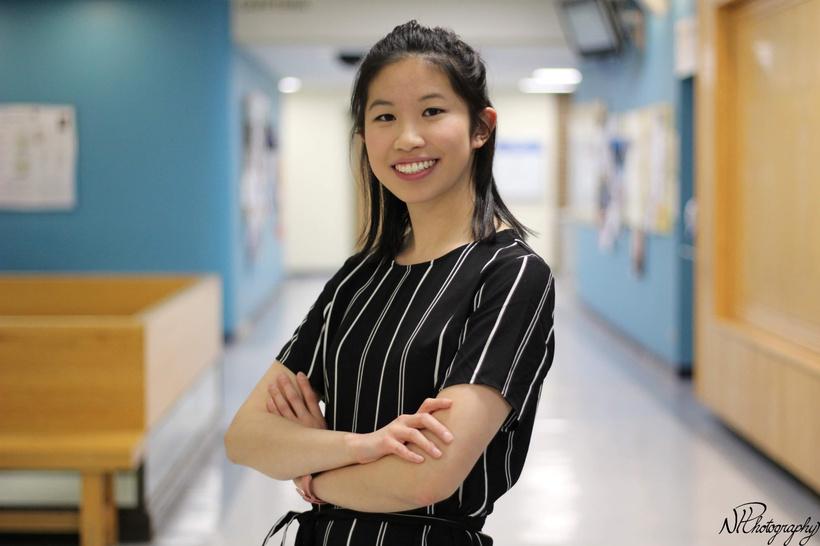
IPSF PARO
18
“It has been an honor to be involved with the COVID 19 vaccine efforts this past year I have been involved with scheduling appointments, managing vaccine inventory, preparing doses, and administering injections at community pharmacies and at mass clinics with Michael Garron Hospital in Toronto I'm proud to be able to join in the fight against COVID 19 even as a pharmacy student!”
Camille, University of Waterloo pharmacy student
These are just a few examples of the stories of hope and resilience and the eagerness of Canadian pharmacists and pharmacy students to provide education and injections to patients


These efforts have been recognized by members of the public who have gained a new understanding, and appreciation of the roles of pharmacists The vaccination efforts provide hope that the dark times of the pandemic will get better

Covid 19 Vaccines [Internet] World Health Organization; c2022 [cited 2022 Feb 7] Available from: https://wwwwhoint/emergencies/di seases/novel coronavirus 2019/covid 19 vaccines
Covid Vaccine Report [Internet] Canadian Pharmacists Association; c2022 [updated Nov 2021; cited 2022 Feb 7] Available from: https://wwwpharmacistsca/cpha ca/function/utilities/pdf servercfm? thefile=/cpha on the issues/CPhA COVID Vaccine Report Nov2020pdf
Welds K Scaling Heights: The Role of Community Pharmacy in Covid Vaccinations and What’s on the Horizon Neighborhood Pharmacy Gazette Neighborhood Pharmacy Association of Canada; c2022 [updated Dec 2021; cited 2022 Feb 7] Available from: https://neighbourhoodpharmaciesc a/neighbourhood pharmacy gazette 2021 fallwinter issue
Al Jabri A, Al Janaby Z, Kmeic P, et al Student Voice: Reflecting on Joining the Covid 19 Vaccine Campaign University of Toronto Leslie Dan Faculty of Pharmacy; c 2022 [updated Sept 2021; cited 2022 Feb 7] Available from: https://wwwpharmacyutorontoca/n ews announcements/student voice reflection joining covid 19 vaccine campaign 1 1 1
Camille is a student in Ontario who participated in many vaccination clinics, giving Pfizer and Moderna vaccines
Figure 1 Camille administering a second dose of the Pfizer vaccine to a patient at Pharmasave
Figure 2 The Toronto Vaccine Day held at Scotiabank Arena on June 27, 2021, successfully vaccinated 26,000+ people in one day
IPSF PARO
References: 1
19
Member Perspectives Perspectives
The Costa Rican Students Federation (FECOEF) annually organizes a national symposium for pharmacy students (SINAEF) Its purpose is to provide students an opportunity to comprehend and update themselves on current pharmaceutical issues, broaden their professional development and provide spaces where they get to know each other and expand their network


At the V SINAEF, students received presentations and had competitions, forums, workshops and recreational activities To the date, this event is the largest student’s academic activity in our country, but this year FECOEF’s board of directors took it to the next level and for the first time, extended the invitation to all IPSF’s associations, making it the first hybrid modality SINAEF
The event was held January 21st 23rd, 2022 Its organization took four months and 32 pharmacy students who volunteered to make this event such a successful one
To highlight the big efforts the medical and scientific field did and are currently making to fight against the COVID 19 pandemic, the main topic of the V SINAEF would be “Heroes of Public Health”
The main goal of the talks was to inspire students to become professionals capable of influencing and revolutionizing worlds’ health just as the medical and scientific field has done for us
As for the competitions, we developed the Patient Counseling Event (PCE), Clinical Skills Event (CSE), Posters Event (PE) and Compounding Event (CE)
Additionally, the forum was about “The Present and Future of Psychoactive Substances Consumption in the Actual Syndemic Context in Costa Rica”, where professionals with PhDs in pharmacy, neurology, nursing, criminology and psychology participated and discussed their perspectives
Then, the workshop given was about leadership skills Lastly, the two main recreational activities were at the end of each day
So students could relax, connect and have a good time; there was a Black & White Party for the first night and an International Night for the second night
Everything took place at the Radisson Hotel, so we had a big enough space to develop all the events while keeping the social distance safety measures recommended by the Ministry of Health of Costa Rica
 Contact Person - Jimena Vargas, FECOEF Costa CRica Person - Jimena Vargas, FECOEF Costa Rica
Contact Person - Jimena Vargas, FECOEF Costa CRica Person - Jimena Vargas, FECOEF Costa Rica
IPSF PARO
ontact
Member Member Organization Organization Organization
Perspectives 20
This event was possible thanks to sponsorships from pharmaceutical companies, professional entities and several companies of Costa Rica

With their help, not only was developing the SINAEF at this amazing hotel and giving national pharmacy students a welcoming kit made possible, but whole or partial grants were given to a considerable number of students in order to participate and have an opportunity to grow professionally


In total, there was a participation of 140 pharmacy students, which makes it the biggest SINAEF ever made At the end, the organizational team saw a high degree of satisfaction and received positive feedback regarding the organization and development of the event
We managed to incorporate a large number of new students into the world of scientific research focused on pharmacy, in addition to promoting their active participation at FECOEF
Figure 2 Photo of the organizing team
Figura 3 Fórum
IPSF PARO
21
Maintaining constant training corresponds to a need derived from the permanent change that surrounds the professional work area as future pharmacists We are responsible for nourishing ourselves with new knowledge and experience, in order to perform whatever tasks professional or otherwise must be done daily Therefore, when constantly learning we can be more productive, minimize errors and professional risks, and also give us the opportunity to create a better environment in the pharmaceutical care we deliver to our patients
In October 2021, the ANEQyF Chile board of directors began conversations with the representatives of “ALTAIR Capacitaciones'', a company that is dedicated to teaching improvement courses, mainly aimed at professionals in the health area “ALTAIR Capacitaciones'' was created in 2019 by a team made up of pharmaceutical chemical professionals and accountant auditors

To date, they have taught courses on primary health care, regulatory affairs, pharmaceutical marketing, import and registration of cosmetic products, among others
As a result of meetings held by the board of directors of ANEQyF Chile and “ALTAIR Capacitaciones'', a mutual agreement was reached where student members of ANEQyF would be able to count on a limited amount of 100% scholarships for the courses taught by “ALTAIR Capacitaciones”

The scholarship application process was carried out through an application form, in which students answered questions about the extracurricular activities they carried out and their motivations for applying for the scholarship of the course offered
The applications were reviewed by the BOARD OF DIRECTORS of ANEQyF, looking for the profiles that were closest to the context of the training Scholarship students were contacted via email and asked to confirm their intention to participate
Finally, the scholarship students were announced through the official Instagram of ANEQyF Chile
The courses taught by “ALTAIR Capacitaciones” that had scholarship students from ANEQyF Chile were: 1
Importation and registration of cosmetic products I (October 2021)
Pharmaceutical management for primary health care (November 2021)
Pharmaceutical management of metabolic syndrome (December 2021)
Importation and registration of cosmetic products II (January 2022).
Strategies for pharmacotherapeutic follow up (February 2022)
Member Member Member Organization Organization Organization Perspectives Perspectives Perspectives

As an association we are very happy to extend opportunities of this type to students in our region In addition, we appreciate the high number of applications that are presented in each of the calls to apply for the training scholarships Finally, we greatly appreciate “ALTAIR Capacitaciones” for trusting in the scope that ANEQyF has in future pharmaceutical chemical professionals
 Contact Person - Emilio Millan, ANEQyF CChile ontact Person - Emilio Millan, ANEQyF Chile
Figure 2 Cover of the publication with the announcement of the agreement between ANEQyFChileand ALTAIRCapacitaciones
Figure 1 Participants of the course "Import and Registration of CosmeticProducts"intheirlastclass
Contact Person - Emilio Millan, ANEQyF CChile ontact Person - Emilio Millan, ANEQyF Chile
Figure 2 Cover of the publication with the announcement of the agreement between ANEQyFChileand ALTAIRCapacitaciones
Figure 1 Participants of the course "Import and Registration of CosmeticProducts"intheirlastclass
2 3 4 5 IPSF PARO
22
Member Member Perspectives Perspectives Perspectives
The Peruvian Association of Pharmacy and Biochemistry Students (APEFYB, Peru) aims to promote the professional development of students of national and private schools and faculties of Pharmacy and Biochemistry in Peru, in addition to addressing issues related to Public Health, pharmaceutical knowledge and the generation of links with student associations in the world through its affiliation to the International Pharmaceutical Students' Federation (IPSF) representing Peru as its national association



Framed within these objectives, every year our most important event takes place: The V Peruvian National Congress of Students of Pharmacy and Biochemistry where we promote the improvement of skills and increase the knowledge of students in different thematic areas as well as social events to share with all members nationwide In 2019, the last national congress was held in person and in 2021 the fifth edition will be held in its virtual format
The planning of the V CONAPEFYB began in advance, a reception committee was formed with certain functions and committees were formed with volunteers to work as a team focused on each of the aspects to carry out this activity

Among the committees formed we can mention the academic, logistics, reception, social activities, cultural events, and media committees The event was completely free, so there was no treasury commission, and the Zoom account was provided by the university that was in charge of the organization: María Auxiliadora University
There were 14 presentations throughout this congress which included topics such as: Technovigilance of medical devices, Elaboration of magistral formulas and officinal preparations, Importance of Research in Natural Products to obtain value added products and to evaluate the safety effect, Andean Sanitary Regulation of Cosmetic Products, Quality Control in the Pharmaceutical and Cosmetic Industry, Fragrance chemistry and its applications in cosmetics, Errors in Magistral Formulation and Possible Solutions, Bioinformatics applied to the development of vaccines and diagnostic tools, Hair Cosmetics, Hair Straightening, Good Manufacturing Practice, Good Pharmaceutical Office Practice; Coffee, mycotoxins and climate change, and a session was held regarding soft skills.
Figure 1: officilal flyer of the V peruvian national congress of pharmacy and biochemistry students
Figure 2 Virtual session
IPSF PARO
Contact Person - Kathya Huertas, APEFyB CPeru ontact Person - Kathya Huertas, APEFyB Peru
Member Organization Organization Organization
23
In addition to the zoom sessions on the aforementioned topics, there was a scientific contest where members of all APEFYB subsidiaries participated; a session to learn more about APEFYB and IPSF where we were accompanied by the Chairperson of PARO, Mr. Hugo Napán and a social event to elect the ‘Miss’ and ‘Mister’ of the event

Finally, the entire reception committee worked hard to make this event a success, the response was positive and we had 632 participants We hope that the next congress will be in person and that we can again receive students from abroad as in the last national congress that was in person in 2019 in Trujillo
No doubt our branch in Iquitos is working very hard for the VI CONAPEFYB 2022!

 Figure 4 Presentation of "Opportunities with IPSF" by the CP of APEFyB Peru 2021 2022
Figure 3 Dr Enrique Alia's presentation for his session on the errors in magistral formulation and possible solutions
Figure 4 Presentation of "Opportunities with IPSF" by the CP of APEFyB Peru 2021 2022
Figure 3 Dr Enrique Alia's presentation for his session on the errors in magistral formulation and possible solutions
IPSF PARO
24
Member
Organization Organization Organization Perspectives Perspectives Perspectives
In the month of October, the United States celebrates American Pharmacists and the roles they play in maintaining health and wellness for our community To promote “October is Pharmacists’ Month” in the United States, the American Pharmacists Association Academy of Student Pharmacists (APhA ASP) organized a virtual student exchange program during the month of October to promote the pharmacy profession and showcase available opportunities for student pharmacists in the United States and from other countries

This event also served as a student exchange whereby students from around the world joined to discuss the pharmacy practice setting in their respective countries


The event was held over three weekends so as to allow maximum participation from all students The first day consisted of introductions and a welcome from the APhA ASP President and the IPSF representatives from the USA Thereafter, the students played virtual games through Kahoot and ended the night with a networking and getting to know each other session The second and third days comprised of introductions to different pharmacy settings in the United States Some of the areas in which pharmacists can contribute and play a role are Academia/Research, Community/Retail pharmacy, Hospital/Clinical pharmacy, and Industry/Pharmaceutical pharmacy We conducted a Q&A session with representatives from each of the practice areas just mentioned and asked for testimonials on their experiences Thereafter, we had a live panel of students to answer questions from any participant about any of the practice areas

After each day’s session, we divided students into breakout groups to share their thoughts on the discussions and ask any further questions they may have Students also had the opportunity to share contact information and social media in order to stay connected after the virtual SEP We made sure to have USA’s IPSF Representatives (SEO, SEO elect, CP, NPC) in those breakout rooms to moderate, answer any questions, and collect feedback from the participants
In conclusion, the event was a success with over 580 students participating from all around the world Students had the opportunity to learn about different pharmacy practice areas in the United States, ask questions, and share the opportunities the pharmacy profession holds in their countries Since we were unable to participate in the IPSF SEP this past year, this event gave the students an opportunity to connect and engage with their profession at a larger scale This event also allowed us to advertise IPSF and its benefits to the student pharmacists in United States
Figure 1 Zoom session of Virtual SEP
IPSF PARO
Contact Person - Ally Campbell, APhA-ASP CUSA ontact Person - Ally Campbell, APhA-ASP USA
Member Member
25
Member Member Member
Organization Organization Organization Perspectives Perspectives Perspectives
The need for blood donations never ceases, not even in the midst of a pandemic According to the Canadian Blood Services, during the early part of the pandemic, there was a decrease in the number of blood donations due in part to uncertainty and fear surrounding the virus and reduced capacity at donation sites to align with social distancing requirements Although the supply decreased, the demand did not Efforts were made to encourage donation, including a call to action by Prime Minister Justin Trudeau, and later in 2020, levels of blood donation had returned to almost pre pandemic levels.

As future health care professionals, pharmacy students across Canada felt the urge to educate the public about the need for blood donations and to encourage people to donate IPSF Local Representatives across the country worked hard to organize blood drives in partnership with their local blood donor clinics to allow people to donate blood while following the sanitary guidelines required of the pandemic
This article highlights a few examples of successful blood drives organized by IPSF Local Chapters across Canada

In October 2021, IPSF Representatives at the University of Montreal, in partnership with Hema Quebec held a blood drive They promoted the event on their social media and set up a place on campus so that pharmacy students could donate blood during their lunch hour Overall, they received 46 donations! The established partnership with Hema Quebec allowed the event to run smoothly and also allowed for regular blood drives at the university
Later in November 2021, IPSF Representatives at Memorial University of Newfoundland (MUN) held a blood drive at their local Canadian Blood Services donor center The event was promoted through physical posters and via social media Incentives such as granola bars, snacks and vouchers to a local restaurant were offered to promote increased donations Information about eligibility and the importance of blood donations was provided by the Canadian Blood Services
Out of the 15 appointments reserved, 11 were filled up with successful donors! MUN Pharmacy has had an ongoing relationship where they hold two blood drives each year in the winter and spring They did not let the pandemic stop them and have continued to hold regular blood drives with one planned for March 2022
 Contact Person - Rita Huang, CAPSI CCanada ontact Person - Rita Huang, CAPSI Canada
Figure 1 Memorial University of Newfoundland pharmacy students pose outside donation center adter successful blood drive
Contact Person - Rita Huang, CAPSI CCanada ontact Person - Rita Huang, CAPSI Canada
Figure 1 Memorial University of Newfoundland pharmacy students pose outside donation center adter successful blood drive
IPSF PARO
26
Also in November, IPSF Representatives at the University of Waterloo organized a blood drive where they carpooled to the local blood donation center in Bridgeport Seen for the first time in 20 years, all 6 donation chairs were occupied by first time donors! After the blood drive, they ran a social media campaign to raise awareness of the blood donation process, celebrate their first time donors, and encourage others to follow in their footsteps

Although the uncertainty of the pandemic made it challenging to organize in person events, including blood drives, IPSF Representatives across Canada worked hard to make donating blood accessible and safe Along with recruitment of donors (many first time ones!), students ran social media campaigns to highlight the importance of blood donations These initiatives were a success!


 Figure 2 Memorial University of Newfoudnland pharamcy student prepaares to donate blood
Figure 4 All smiles udnerneath masks while student poses with Hema Quebec representative after doanting blood
Figure 3 Promotional poster from UNiversity of Montreal's blood drive
Figure 2 Memorial University of Newfoudnland pharamcy student prepaares to donate blood
Figure 4 All smiles udnerneath masks while student poses with Hema Quebec representative after doanting blood
Figure 3 Promotional poster from UNiversity of Montreal's blood drive
IPSF PARO
27
Member Member Member
Organization Organization Organization Perspectives Perspectives Perspectives
Medicines are the most counterfeit products on the world market, and it is a public health issue for all countries across the globe, however, even with the known magnitude, this is not a matter addressed on a daily basis by health professionals and undergraduate students Combat counterfeit medicines is included in the 19th FIP Development Goals Patient Safety, having said that, FEBRAF joined APEFyB, Peru; CAPSI, Canada; IPGA SF, India; OEQF, Guatemala to support the implementation of this goal and raise awareness to our public on this regard, in addition to strengthening connections between associations in the process.

The project took place on the social media of the participating associations, more specifically on the Instagram platform, as will be detailed below In this collaboration, each country produced a sequence of works, such as:
1 2 3
Photo campaign among the members of their organizations, with acknowledging phrases
Short video (approximately two minutes), briefly exposing the initiatives carried out by their respective country to combat the medicine counterfeiting Poster, with data and numbers related to the initiatives of each country to fight this public health issue


The development of the project took place over approximately two months, starting in November 2021 with the call and search for associations interested in contributing to the project, and ending in January 2022 with posts of the work carried out by the participating associations during the last two months of 2021
As the project took place virtually and through social networks, its implementation occurred through posts of the materials produced by each association The posts were made through the collaborative post tool, where there are two different accounts for the same post

With this, posts were made throughout a week and each association was assigned a day On the designated day, that association would post its work in the collaboration format with the official FEBRAF account As only one association was posting per day, the other associations were encouraged to promote the campaign's posts even if it was not their day of posting
Therefore, the project was finalized with the posts of the works of each country, in addition to a "thank you" post
The reach of the project was awesome thanks to the promotion made by each association, which brought different followers from all countries that were part of the initiative

The feedback received from associations and followers was great, highlighting that the main message of the project was successfully conveyed
Furthermore, it was great to see associations simultaneously supporting a single project This experience will open doors for more collaborations in the future
Contact Andre Koga,Andre Koga, Brazil
Figure 1 AEPFyB, OEQF, IPGA SF collaboration
IPSF PARO
Person -
FEBRAF CBrazil ontact Person -
FEBRAF
28






@IPSFparo IPSF PARO IPSF PARO @IPSFparo paro.ipsf.org @ipsfparo
PARO NEWSLETTER | ISSUE 9

INTERNACIONAL PHARMACEUTICAL STUDENTS' FEDERATION
